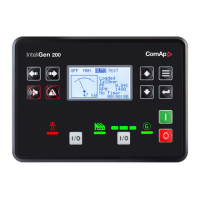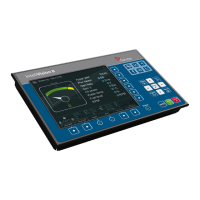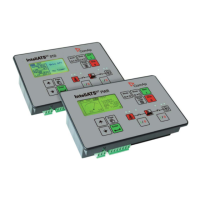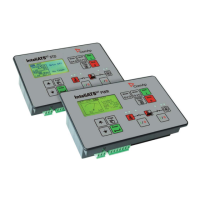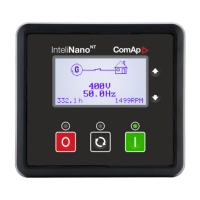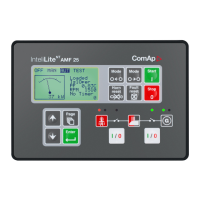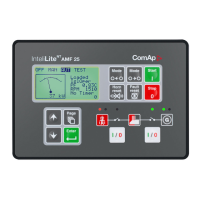IGS-NT Communication Guide
68
5.3.1 I-CR module functions
Intercontroller CAN bus extension (one or more I-CR modules can be used).
Intercontroller CAN bus bus-tie bridging – makes groups of controllers in segments A and B“invisible” one for
another depending on bus-tie breaker state, keeping the PC communication (ILB, IG-IB) in function for all
controllers.
Peripheral CAN bus extension
5.3.2 I-CR configuration jumpers
P2 Forces 250 kbps mode (32C) on CAN A, otherwise speed autodetection is used.
P3 Forces 250 kbps mode (32C) on CAN B, otherwise speed autodetection is used.
P4 Activates Filter mode (bus-tie bridging).
P5 Forces alternate controller address 3 for bus-tie status reading (default controller address is 4).
P10 If “H” network configuration used (two I-CR units), it must be switched to RS-485 mode.
Note: For more detailed information about I-CR, see the Application sheet “Extending the CAN bus” or IGS-NT-
x.y-Installation guide.pdf.
Note: CAN bus has to be terminated at both ends. In the case of surge hazard (connection out of building in
case of storm etc.) see the “CAN and RS485 bus wiring” chapter of the IGS-NT-Installation-Guide-08-2014-
r1.pdf.
5.4 I-CR-R Module for CAN Bus Redundancy
This module is intended to provide CAN bus redundancy in applications where IG/IS-NT controllers are placed
in several switchboards that need to be interconnected by the CAN bus communication line and where there is
essential to keep the line working. As a side effect, the module also provides the CAN bus line extension.
As the CAN bus provides data exchange needed for Load Sharing and VAr Sharing and also for Power
Management features, it’s redundancy can be very important in complex systems with more engines, more
mains incomers.
Note: I-CR-R may be used as a redundancy module for a maximum of 20 controllers (counted all controllers on
the CAN2 bus).
For usage I-CR-R in an installation of more as 20 controllers please contact our technical support for another
redundancy solution.

